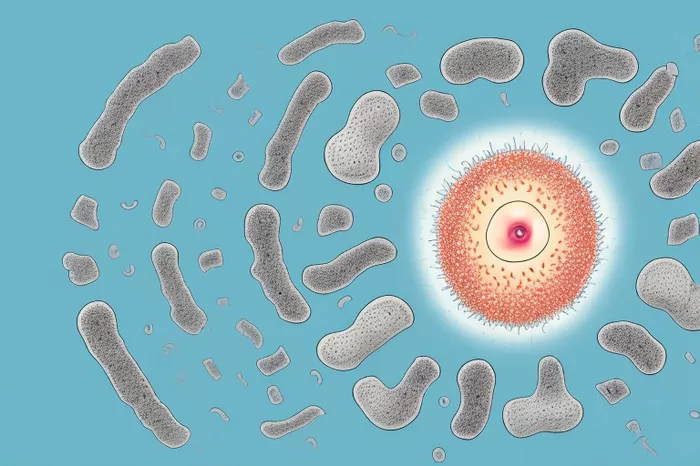Vitiligo and albinism are two distinct dermatological conditions that often garner attention due to their visible effects on the skin. While they differ in their etiology and presentation, there are intriguing connections between the two that merit exploration. This article delves into the similarities and differences between vitiligo and albinism, shedding light on their underlying mechanisms and clinical manifestations.
Vitiligo: A Complex Disorder of Pigmentation
Vitiligo is a chronic autoimmune disorder characterized by the progressive loss of melanocytes, the cells responsible for producing the pigment melanin. Melanin gives color to the skin, hair, and eyes, and its depletion results in the development of depigmented patches on the skin. These patches may vary in size, shape, and distribution, often causing significant emotional distress and impacting quality of life.
The exact cause of vitiligo remains elusive, but it is believed to involve a combination of genetic, environmental, and autoimmune factors. Research suggests that autoimmune-mediated destruction of melanocytes plays a central role in the pathogenesis of vitiligo. In individuals with vitiligo, the immune system erroneously targets and attacks melanocytes, leading to their destruction and subsequent depigmentation of the skin.
Albinism: An Inherited Disorder of Melanin Production
Albinism, on the other hand, is a congenital disorder characterized by the partial or complete absence of melanin production. It is primarily a genetic condition caused by mutations in genes involved in melanin synthesis. Individuals with albinism typically exhibit hypopigmented or unpigmented skin, hair, and eyes, giving rise to a distinct appearance.
The absence of melanin in individuals with albinism renders them highly susceptible to the harmful effects of ultraviolet (UV) radiation from the sun. As a result, they often experience sunburns, increased risk of skin cancer, and visual impairments, such as photophobia and reduced visual acuity.
Shared Features and Overlapping Mechanisms
While vitiligo and albinism manifest differently, they share several underlying features and mechanisms:
1. Melanocyte Dysfunction:
Both vitiligo and albinism involve abnormalities in melanocyte function or survival. In vitiligo, melanocytes are destroyed by the immune system, leading to depigmentation, whereas in albinism, melanocytes are present but unable to produce melanin effectively.
2. Autoimmune Involvement:
Although not a characteristic feature of albinism, autoimmune mechanisms have been implicated in certain subtypes of the condition. Autoimmune phenomena, such as the presence of circulating autoantibodies or lymphocytic infiltration, have been observed in some individuals with albinism, suggesting a potential overlap with vitiligo in terms of immune dysregulation.
3. Genetic Predisposition:
Both vitiligo and albinism have a genetic basis, with mutations in specific genes contributing to their development. In vitiligo, genes associated with immune regulation, melanocyte function, and oxidative stress have been implicated, while in albinism, mutations affect genes involved in melanin synthesis pathways.
4. Impact on Quality of Life:
Both conditions can have significant psychosocial impacts on affected individuals. The visible nature of depigmented skin patches in vitiligo and the distinct appearance associated with albinism can lead to stigmatization, prejudice, and diminished self-esteem.
Distinguishing Features and Clinical Characteristics
Despite their shared features, vitiligo and albinism also exhibit distinct clinical characteristics:
1. Pigmentary Patterns:
In vitiligo, depigmented patches typically appear irregularly distributed and may affect any part of the body, including areas exposed to sunlight and those protected from it. In contrast, albinism results in generalized hypopigmentation or absence of pigment, affecting the skin, hair, and eyes uniformly.
2. Presence of Ocular Abnormalities:
While ocular abnormalities can occur in both conditions, they are more commonly associated with albinism. Individuals with albinism often present with nystagmus, strabismus, reduced visual acuity, and photophobia due to the lack of pigmentation in the eyes.
3. Sun Sensitivity:
Although individuals with vitiligo may experience increased sensitivity to sunlight, particularly in depigmented areas, the severity of sun sensitivity is typically greater in individuals with albinism. Albinism-related skin lacks protective melanin, making it highly susceptible to sunburn and skin damage.
4. Inheritance Patterns:
Vitiligo is considered a multifactorial disorder with complex inheritance patterns involving both genetic and environmental factors. In contrast, albinism follows Mendelian inheritance patterns, with autosomal recessive inheritance being the most common.
Clinical Management and Treatment Approaches
The management of vitiligo and albinism revolves around symptom control, prevention of complications, and addressing psychosocial concerns:
1. Photoprotection:
Sun protection measures, including the use of broad-spectrum sunscreen, protective clothing, and sunglasses, are essential for individuals with both vitiligo and albinism to minimize sun damage and reduce the risk of skin cancer.
2. Camouflage Techniques:
Cosmetic camouflage techniques, such as makeup or self-tanning products, can help conceal depigmented areas in individuals with vitiligo, improving cosmetic appearance and enhancing self-confidence.
3. Immunomodulatory Therapies:
In vitiligo, immunomodulatory therapies, such as topical corticosteroids, calcineurin inhibitors, and phototherapy, aim to suppress the autoimmune response and stimulate melanocyte regeneration. However, these treatments may not be effective for all patients and can be associated with side effects.
4. Low Vision Aids:
Individuals with albinism may benefit from low vision aids, such as magnifiers, tinted lenses, and visual aids, to improve visual function and enhance quality of life.
Conclusion
Vitiligo and albinism are complex dermatological conditions with overlapping features and distinct characteristics. While vitiligo primarily involves autoimmune-mediated destruction of melanocytes, leading to depigmentation, albinism is characterized by inherited defects in melanin production. Despite their differences, both conditions can have profound impacts on affected individuals, necessitating comprehensive management approaches that address not only the physical symptoms but also the psychosocial aspects of the diseases. Continued research into the underlying mechanisms of vitiligo and albinism is crucial for the development of more effective treatment strategies and improved outcomes for patients.
























